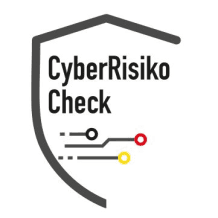Cross-Site Request Forgery (CSRF) is a complex and extremely relevant security issue on the internet, which is of importance to developers, administrators, and end-users alike. This detailed article explains what CSRF means, how the attack vectors work, what risks and potential damages accompany such attacks, and how systems can protect against such attacks. Additionally, this article answers various W-questions to provide a comprehensive picture:
W-Questions about CSRF:
• What is CSRF?
• Who is affected by CSRF?
• When and where does CSRF typically occur?
• Why is CSRF dangerous and how do such vulnerabilities arise?
• How can CSRF be effectively detected and prevented?
To inform the reader in depth, individual aspects of CSRF will now be discussed in detail.
Introduction and Background
Cross-Site Request Forgery, often abbreviated as CSRF, refers to a type of attack where an attacker causes the browser of an authenticated user to perform unwanted actions on a website where the user is logged in. This technique often exploits the trust relationship between the user and the web application in question to initiate harmful requests. Unlike traditional attacks, which typically exploit vulnerabilities in the software, CSRF takes advantage of the fact that browsers automatically send authentication cookies or session tokens when the user is already logged in.
Historically, vulnerabilities in web applications were first addressed through SQL injection or Cross-Site Scripting (XSS). With the evolution of modern web applications, request manipulation such as CSRF has also come into focus. The increasing interconnectedness and the operational reality in which users are active on various websites provide attackers with numerous opportunities to implement CSRF attacks. This problem affects not only websites with sensitive banking or financial data but also everyday communication portals, social networks, and web applications where simple transactions can be made.
Mechanisms and Functionality of CSRF
To better understand the CSRF concept, a scenario of a forged form is often used. The attacker creates a webpage that contains a form, which, upon loading or through a hidden mechanism in the background, sends a request to a target webpage where the user is authenticated. When browsers automatically send such requests with valid cookies, the attacker gains possession of what would otherwise be legitimately authorized by the user. This may enable the attacker to perform transactions, change settings, or retrieve private information.
It is important to understand that CSRF attacks do not necessarily rely on a security vulnerability in the software, but rather on how the web browser implements standard requests and authentication mechanisms. Modern browsers have APIs and security policies that are largely standardized. Nonetheless, missing verification steps on the server side - such as checking a so-called CSRF token - can open the door for these attacks.
In numerous attack scenarios, an attempt is made to get the end user to visit a specially prepared website. Once there, a legitimate action is performed in the background on another website without the user noticing. In many cases, the user discovers too late that their data has been compromised or transactions have been fraudulent. The consequences can not only be financial but also permanently damage trust in online services.
Detailed Examination of Attack Vectors
Attackers often use multiple tactics in CSRF to ensure that their harmful action is successful. The most common techniques include:
• Automated form filling: Through prepared hyperlinks, GET requests, or automated POST requests, a website can be manipulated in the background.
• Image tags, iframes, and JavaScript: Often, invisible iframes are embedded in which actions are performed on a target page. It does not matter whether these actions are implemented as GET or POST requests.
• Use of social engineering: In addition to purely technical methods, attackers often rely on psychological tricks to entice users to click on malicious links or visit unsafe sites. For example, the attacker may post a link in a popular social network that seems harmless but triggers a critical transaction in the background.
W-Questions that are often raised in this context include:
• Who often becomes the target of a CSRF attack? – In particular, users who perform various sensitive actions in multiple browser sessions are at risk. Administrators and developers who work in environments with inadequate protective measures are also common targets.
• What makes CSRF so dangerous? – The main danger lies in the ability to manipulate large amounts of data, trigger transactions, and thereby permanently damage users' trust in web applications.
Technical Details: How Does a CSRF Attack Work?
On a technical level, a CSRF attack typically begins with triggering a cross-site request. This can occur through manipulated HTML elements, such as a form whose action attribute points to a recommended URL that causes a critical change on the target platform. Often, no additional authentication occurs here since the browser already has valid session data.
A central element in defending against it is the implementation of Anti-CSRF tokens. These are special, dynamically generated tokens added to a form and sent during transmission. The server then verifies whether the provided token matches the originally generated one. If this comparison fails, the request is rejected as unauthorized. The concept of the token provides an additional security barrier that significantly complicates the execution of CSRF attacks for an attacker.
Protective Measures and Best Practices
Important strategies to protect against CSRF attacks include numerous technical and organizational measures. Among the most effective countermeasures are:
a) Use of synchronizer tokens: Implementing Anti-CSRF tokens in forms and API calls is the most widely used protective measure. These tokens should be randomly generated and linked to each user session. This ensures that an attacker cannot simply guess or reuse the correct token.
b) Use of SameSite cookies: Modern browsers support the "SameSite" attribute for cookies. By setting this parameter, it is prevented that cookies are sent in a third-party context. This reduces the risk of an attacker gaining access to session data via another website.
c) Verification of the HTTP method: It is advisable not to handle requests that trigger critical functions exclusively via GET but rather via POST or other HTTP methods. POST requests can be significantly better secured through protective measures like CSRF tokens.
d) Use of captchas: Although captchas are primarily used to prevent spam, they can also serve as an additional security barrier against automated requests in certain cases. This can further complicate CSRF attacks as human interaction becomes necessary.
e) Regular security reviews: Regular code audits and penetration tests help to quickly identify and fix vulnerabilities. It is essential to continuously monitor and update web application code and the implementation of authentication mechanisms.
f) Training and raising awareness among employees: Not only technical measures are important - in companies, employees, developers, and administrators should also be regularly trained on the risks of CSRF and other cyber attacks. The higher the security awareness, the more difficult it becomes for attackers to carry out successful attacks.
W-Questions about protective measures:
• How can we prevent a CSRF attack from being successful? – By using synchronizer tokens, SameSite cookies, and strict server-side validations, CSRF risks can be significantly reduced.
• What happens if a CSRF attack succeeds? – A successful attack may lead to unauthorized transactions being executed, potentially resulting in data loss, financial damage, or a loss of trust among users.
Practical Examples and Real Cases
To make the dangers of CSRF more tangible, some examples from practice can be cited. In the past, there have been instances where attackers caused significant damage by injecting harmful links into popular forums or through social media platforms. A well-known example involved an e-commerce platform where attackers triggered transactions in the name of customers through a incorrectly configured payment function. The damage was immense as the affected system had no effective protective measures like
Cross-Site Request Forgery (CSRF) in Germany: Current Developments
The importance of cross-site request forgery (CSRF) in Germany is continuously growing. According to recent studies conducted by the Federal Office for Information Security (BSI), German companies are increasingly affected by cyber threats. The Bitkom association reports that 84% of German companies have been victims of cyber attacks in the last two years.
Especially in the area of cross-site request forgery (CSRF), the following trends are emerging:
Increasing investments in preventive security measures
Heightened awareness of holistic security concepts
Integration of cross-site request forgery (CSRF) into existing compliance frameworks
EU Compliance and Cross-Site Request Forgery (CSRF)
With the introduction of the NIS2 directive and stricter GDPR requirements, German companies must adjust their security strategies. Cross-Site Request Forgery (CSRF) plays a central role in fulfilling regulatory requirements.
Important compliance aspects:
Documentation of security measures
Regular review and updates
Proof of effectiveness to supervisory authorities
Practical Implementation in Everyday Corporate Life
Integrating cross-site request forgery (CSRF) into everyday corporate life requires a structured approach. Experience shows that companies benefit from a step-by-step implementation that considers both technical and organizational aspects.
Think of cross-site request forgery (CSRF) as insurance for your company: The better prepared you are, the lower the risk of damage from security incidents.
Further Security Measures
For a comprehensive security strategy, you should combine cross-site request forgery (CSRF) with other security measures:
Vulnerability Management - Systematic Vulnerability Management
Penetration Testing - Comprehensive Security Testing
Security Hardening - Employee Awareness
Incident Response Plan - Preparing for Security Incidents
Conclusion and Next Steps
Cross-Site Request Forgery (CSRF) is an essential building block of modern cybersecurity. Investing in professional cross-site request forgery (CSRF) measures pays off in the long run through increased security and compliance.
Do you want to optimize your security strategy? Our experts are happy to advise you on the implementation of cross-site request forgery (CSRF) and other security measures. Contact us for a non-binding initial consultation.
🔒 Act now: Have our experts assess your current security situation
📞 Request consultation: Schedule a free initial consultation on cross-site request forgery (CSRF)
📋 Compliance Check: Review your current compliance situation
📌 Related Topics: Cybersecurity, IT Security, Compliance Management, Risk Assessment




